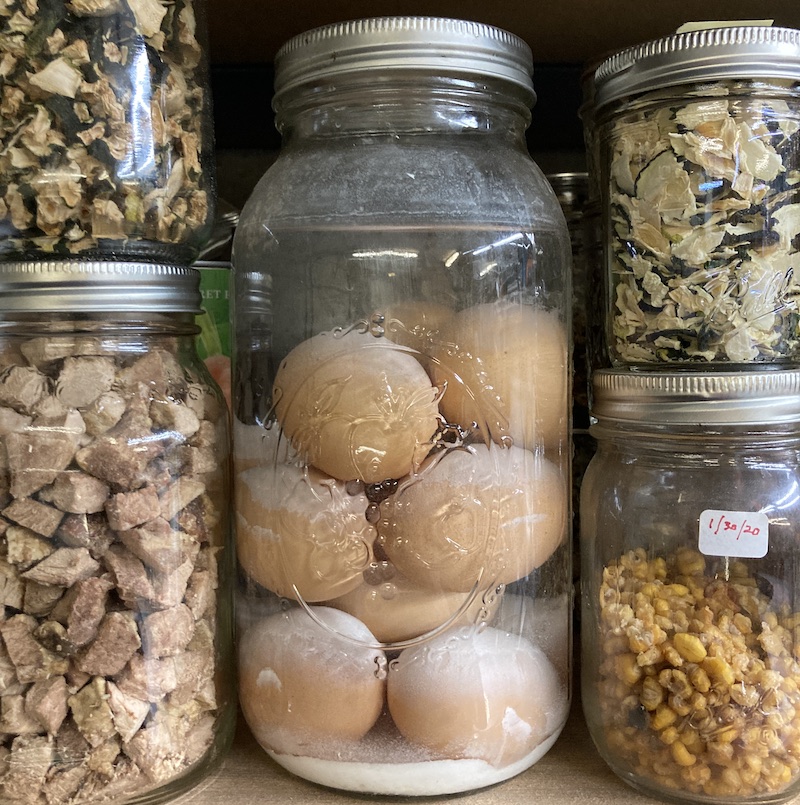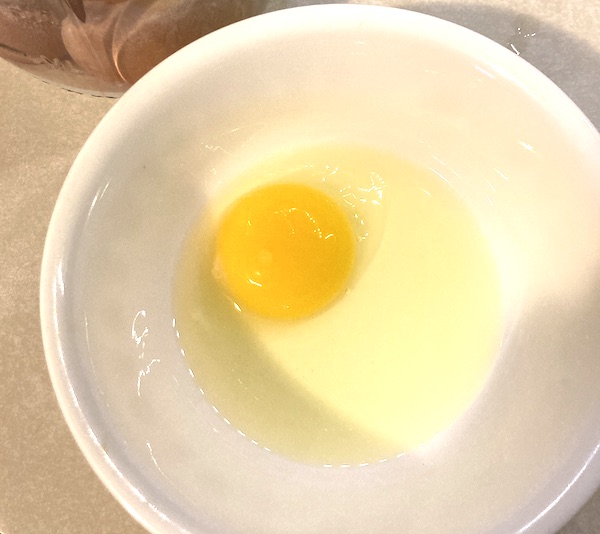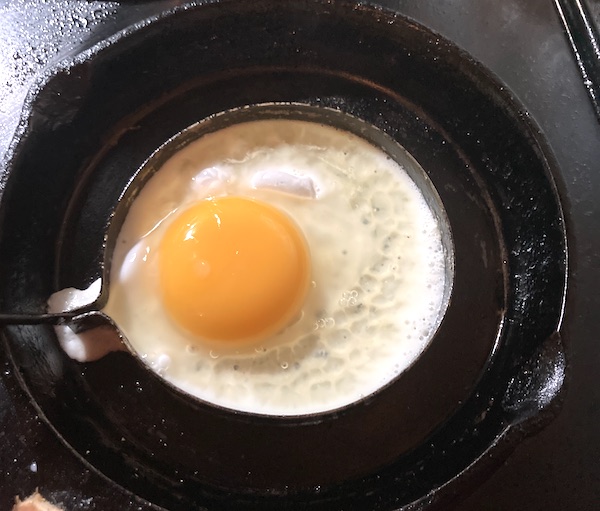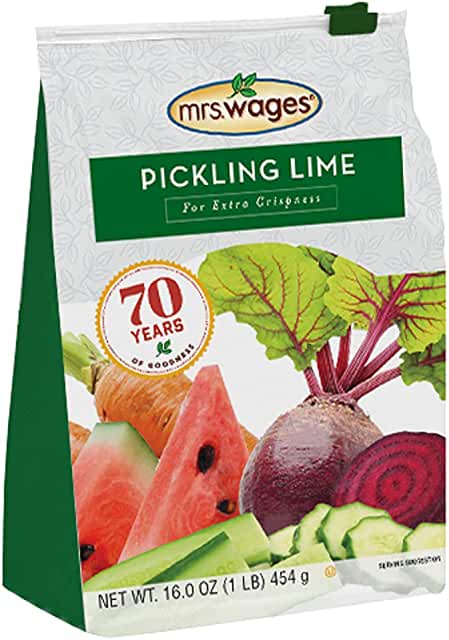
Every spring, the hens lay more eggs than we can comfortably eat. This spring we tried something new (to us), preserving whole eggs in lime water. Today was the first taste test at 5 months.
We regularly leave unwashed eggs on the counter for a few weeks without concern (or refrigeration). Even so, they start to pile up faster than we can eat them in the spring. I have noticed that eggs left out for weeks tended to have runnier whites and the yokes sometimes stuck to the shell if they weren’t rotated periodically. What we wanted was to save eggs from the overabundance of spring for months, not weeks. We wanted to have them in the lean times of late fall and winter.
Every year, I dehydrate a couple dozen eggs at a time as a way to time-shift the surplus. It’s nice to have shelf-stable egg powder, but sometimes I want an over-easy egg for breakfast instead of reconstituted egg, scrambled. (What a whiner, hh?) I read about the lime-water process on Ashley’s blog, practicalselfreliance.com, a couple years ago. Reading about something on the internet is one thing. Doing it is another. So, we decided to try it and see for ourselves.
Per Ashley, we selected a dozen freshly laid (within a day or two) eggs that were clean (no poop) and free of cracks. Sidenote: We only wash eggs that get some poop on them (dirty feet!), but those washed eggs we use within a day or two. For long term storage, the eggs need to be unwashed and undamaged.
Pickling lime (calcium hydroxide) is used to help vegetables retain some crispness when pickled (hence the name). Amazon carries a handy 1 pound package. (affiliate link!) that’s enough for 16 dozen eggs.
Mix 1 ounce (by weight) of the white powder into 1 quart of water. Stir and/or shake well to mix it into saturation. The lime doesn’t all dissolve and some settles to the bottom. This is okay. The excess assures you that there’s as much in suspension (or saturation) as the water will hold.
Place the eggs carefully into an empty half-gallon jar. Pour the quart of lime water in. It should cover the eggs. They need to be below water. Store in a coolish place. For us, that’s our garage. It’s a sort of drive-in root cellar.
This spring, we experimented with two dozen eggs — a dozen each in two half-gallon Mason jars. They sat on the shelf through the summer. Temps in the garage were hardly refrigeration. In the hot days of August, it was over 70 in there.
Five Months On
Now that it’s late September, the chickens are starting into The Molt, so egg laying has dwindled down to one a day. Soon, even that will stop. The young ones won’t start laying until November or so. This is the start of the egg scarcity season here at the homestead. That seemed like a good time to do the first taste test of our lime-water experiment.

I carefully pulled out the top two eggs from one of the jars. I rinsed them off and patted them dry so I wouldn’t be dripping lime water into the raw egg, potentially tainting the taste. I’m not sure if calcium hydroxide has a taste, but I also didn’t want to find out.
Happily, the eggs looked perfect out of the shell. The yokes were deep yellow and plump. The whites were still firm. No “off” smells detected.

They fried up pretty much like a fresh egg would. The taste and texture were pretty much like a fresh egg too. I say ‘pretty much’ because I didn’t do a side-by-side taste test with a fresh-that-day egg. I’ll have to do that at our next testing — perhaps at 7 or 8 months.
8 months from now is when the flock will start laying in springtime abundance again. If I can preserve fresh eggs for 9 or 10 months, that will be enough to get us through the eggless days of winter, post Molt.
So far, so good.


Very interesting Mic, thanks for real world testing!
Is there any reason that that lime solution could not be reused for a second batch? If an egg broke or it looked foul (wordplay alert) obviously not, but lime water shouldn’t grow anything?
You know, we were asking ourselves that very question. Re-using the lime water would be a worthy experiment. At 62 cents per ounce, pickling lime isn’t expensive. Still, why waste a resource? There’s plenty of undissolved lime at the bottom of the jar.
Your eggs should be good for at least 12 months. That is how long mine were in the pickling lime solution. Used the same ratios of lime that you used. All 3 of my neighbors who are used to farm fresh eggs found NO problem, taste was like fresh. And yes, my jar was kept in a cool dark basement room.
Since there was so much lime on the bottom of my jar, to save on lime, this time I put only 1 oz (about 2 tbs) in the 2 quarts of water, with 24 eggs, and still had some settling out. Now I am going for 16 or 18 mos, but that may be stretching it.
Hey Alan,
Thanks for the input. I’m only hoping for 12 months at a stretch — just enough to ease us through the egg shortage of winter. Good to hear you’re reusing the lime water. It’ll be interesting to hear how you do at the 18-month mark. Keep us in the loop!
Hi Mic, just an up date on egg storage in pickling lime solution. After 15 mos. in storage I will give you my findings of my second batch of eggs.
we cracked the eggs to fry them, but the yolks would not hold together, so we had scrambled eggs. Color was good, no smell, taste was good and best of all, after one week now, NO ill effects! I would not recommend going any longer.
PS My eggs were in a gallon jar, and did not flip them.
Hey Alan. Thanks for the update. Your experience at 15 mo. is pretty much mine at 12. We ate our last jar-dozen in May, at 12 months. Like you, the taste and smell were fine. The whites were a bit thinner (runnier) than fresh and yes, the yoke membranes get weak over time. Most of mine had the yoke sticking to the inside of the shell, which contributed to the cracking. For year old eggs, though, that’s not that bad.
This spring we did three half-gallon jars with a dozen eggs each. In one of them, I re-used the lime water to see how it does on a second year. Will try to post an update here when we give it a try later in the fall.
Hi Mic, the yolk of our eggs did not stick to the shells, but broke when dropped into the frying pan.
The jar of eggs was kept in the dark in a basement where the temps ranged from 56 to 70 degrees. Good luck !
trouble with using a canning jar comes with the recommended egg flip – according to the experts the stored eggs need a regular 180 flip to keep the white/yoke loose inside the shell ….
the poly egg cartons will also keep some organization to the stored eggs and make a flip eazy – for a larger container to immerse the egg cartons into – a pop cooler is the modern equal to our forefather’s earthenware crocks ….
IW,
I have found that eggs stored in one position for a while in open air (maybe only a couple weeks) can have the yoke stick to the inside of the shell. It’s still fresh enough, it just doesn’t come out cleanly for an over-easy egg. Rotating the eggs in the jars does present a break hazard. For your poly carton idea, it would be nice to have a rectangular container just a bit bigger than the carton so you’re not mixing up a lot of lime water. I wonder if the forefathers took their eggs out of their crocks now and then to rotate them. Could do that too, I suppose.
All of these sound like great ideas. How often should the eggs be rotated whether in a glass jar or cooler?
Dan, I can’t comment from experience, as I’ve not tried rotating them. Some suggest a weekly turn. Some just say keep the eggs pointy-end down (no rotation). I’m still musing how I might do the rotation without risking cracks.
[…] tested the first of the two half-gallon jars of stored eggs last September. Here’s the post for that taste-test. They were okay, as you can read. This week, I began eating those in the second […]